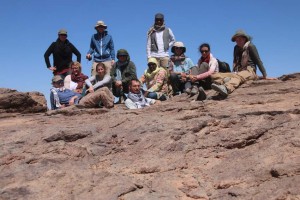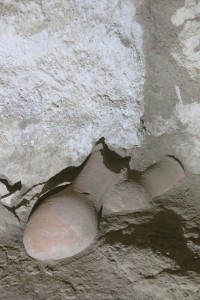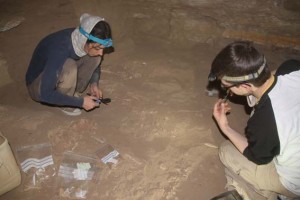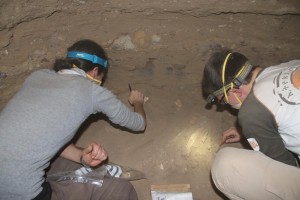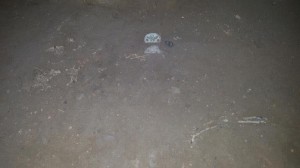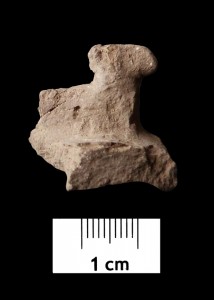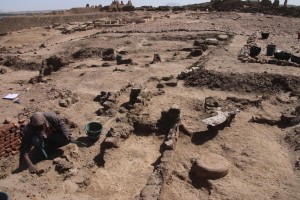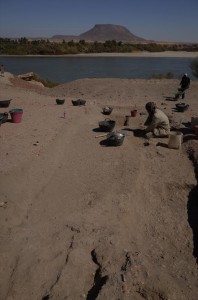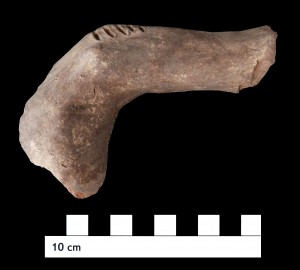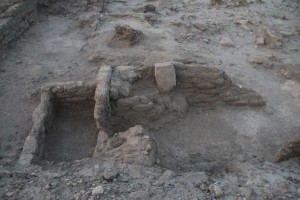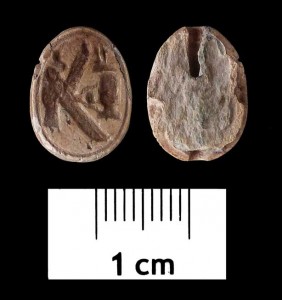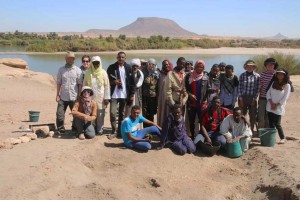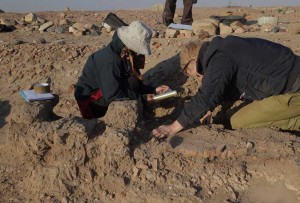A perfect day is about to end – on our day off from work, we had an excellent trip to Soleb, Gebel Dosha and Sedeigna. These sites never fail to amaze me anew on each visit in the last years! Gebel Dosha with its great rock inscriptions and splendid view is definitely one of my favourite places in Upper Nubia. I was very pleased that also the newcomers of the team seemed to enjoy the wonderful setting!
Re-visiting the site and its inscriptions today just fitted perfectly to one of the recent finds from our work at Sai, so far probably the highlight of the cemetery season: Earlier this week, a lovely steatite scarab was found in the burial chamber of tomb 26.
 SAC5 279 (15 x 10 x 7 mm) is simply beautifully made. Its decorated side can be associated with one of the main themes of our project: AcrossBorders, working both at Sai Island in Sudan and Elephantine Island in Egypt, is focusing on all kinds of references and connections between the First Cataract area and the region of Sai. The scarab SAC5 279, like some inscriptions from Gebel Dosha we saw today, is referring to gods from the First Cataract region – in this case to the female deities of the triad of the First Cataract (Khnum, Satet and Anuket). On SAC5 279, Satet is sitting to the left, Anuket to the right – the goddesses are facing each other, with an ankh sign on the knee. A “mr” sign and the “aA”-hieroglyph flank the goddesses and I would translate the complete set as “much beloved by Satet and Anuket.”
SAC5 279 (15 x 10 x 7 mm) is simply beautifully made. Its decorated side can be associated with one of the main themes of our project: AcrossBorders, working both at Sai Island in Sudan and Elephantine Island in Egypt, is focusing on all kinds of references and connections between the First Cataract area and the region of Sai. The scarab SAC5 279, like some inscriptions from Gebel Dosha we saw today, is referring to gods from the First Cataract region – in this case to the female deities of the triad of the First Cataract (Khnum, Satet and Anuket). On SAC5 279, Satet is sitting to the left, Anuket to the right – the goddesses are facing each other, with an ankh sign on the knee. A “mr” sign and the “aA”-hieroglyph flank the goddesses and I would translate the complete set as “much beloved by Satet and Anuket.”
The First Cataract triad was in general very popular in Lower Nubia, and in Upper Nubia as well – but in the case of rock inscriptions like at Gebel Dosha and scarabs like SAC5 279 from Sai one might very well speculate that the owners/producers had actual bonds with the area around Aswan and were “crossing borders” during their lifetime, referring to gods from their hometown in delicate moments.
The batteries are definitely recharged after this great Friday and we are all ready for week 9 and more fascinating finds with complex meanings!

